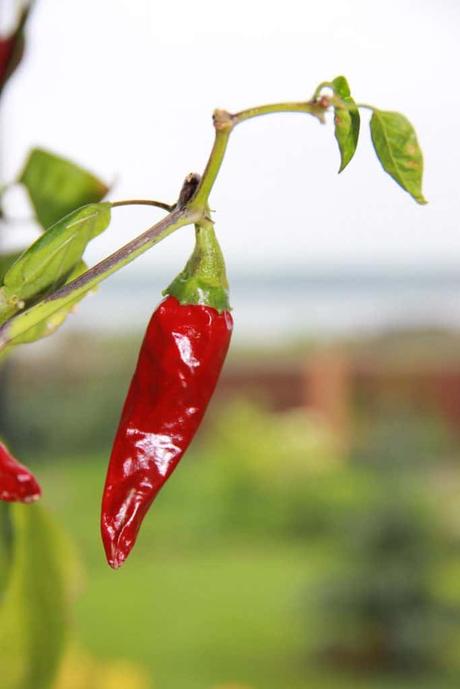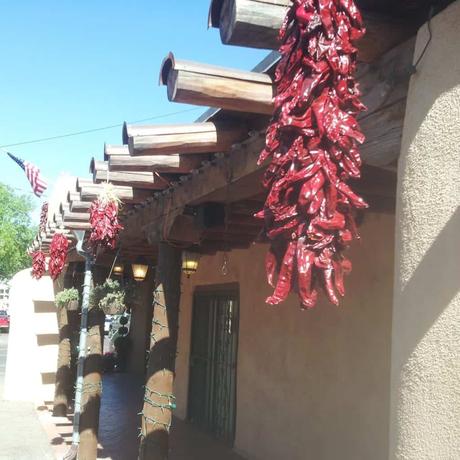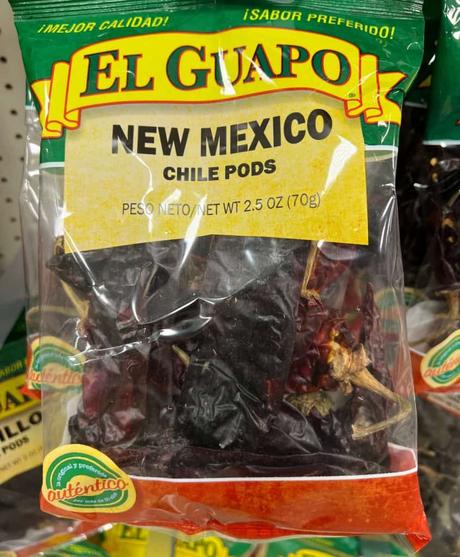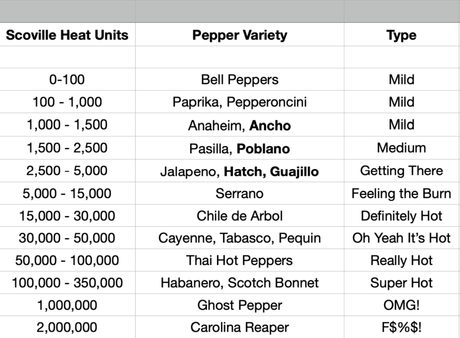I LOVE CHILES! But I know with all the different varieties it can be confusing. Which ones to buy, how hot they are, where to buy them, etc. So here is my crash course on peppers: Chile Peppers 101.
Class is now in session.

I lived in Albuquerque for over 10 years and fell in love with not only New Mexico but also its traditional foods, namely its Chile Peppers. My very first plate of enchiladas with a combination of Red & Green Sauce (Christmas) and I was hooked for life.
Its spicy, earthy flavor is like nothing else I've ever tasted, and I still crave it to this day. But there are a lot of chile peppers you can buy, and knowing which ones to get can be a little confusing so I hope this guide helps.
I will use something called the Scoville Heat Unit (SHU) to compare the levels of heat. The larger the number, the hotter the pepper.
Chile Peppers 101

Chiles are a member of the nightshade family, related to bell peppers and tomatoes. They are primarily used for spice and can be cooked, canned, frozen, dried, and powdered. The spice Paprika is simply ground up paprika peppers.
They are also nutritional powerhouses containing up to 180% of our RDI of Vitamin C. They also contain fair amounts of Vitamin A, K, and Potassium.
Capsaicin is the compound that brings the heat and has been used for everything from weight loss to pain relief. I should also mention it is the oil inside the pepper that contains the capsicum, and that is usually concentrated in the ribs, veins, and seeds. So if you don't like spicy - remove those seeds.
BUT REMEMBER: ANYTIME you handle chiles with your bare hands, it's a good idea to wash them thoroughly before touching your face or eyes. That oil can burn!

Another good rule of thumb to remember about chiles, the smaller the pepper... the HOTTER it is.
For example, look at a sweet Bell Pepper. A Bell is pretty large for a chile pepper and it has absolutely no heat at all. Compare that to one of those little Thai Peppers or a cute little Habanero - ouch.
I personally only buy peppers I can find locally here in the Pacific Northwest. Although whenever our Whole Foods gets a shipment of Hatch Chiles from New Mexico, I will grab a few packages for the freezer. But other than that - I buy what I can find in my grocery store.
Luckily most grocery stores today carry a good variety of both fresh and dried.
In the produce section, I can find Bells, Jalapenos, Poblanos, Serranos, and even Habaneros. And I can also find a variety of dried chiles in the aisle that has Mexican products.

The HATCH Chiles you hear me rave about are New Mexican Peppers grown in the town of Hatch, New Mexico. They have varieties such as Sandia and Big Jim, but I usually just reference them by the name Hatch Green Chiles.
They are often packaged dried as NEW MEXICO CHILE PODS, but sometimes you can find tubs or jars of Hatch GREEN Chile in the freezer or on the shelves.
Red chiles are just green chiles that have ripened.
Many of the dried chiles I buy are actually MEXICAN Chiles with varieties like Pasilla, Guajillo, and Ancho (which is just a dried Poblano). Anchos are really mild and a little smoky, and help tone down the spiciness of the guajillos when used together.
Mexican chiles in general, are usually milder than Hatch, but it really depends on the seasonal temperature, rainfall, and all sorts of things as to which one will be hotter from year to year.
I use many of these dried chiles to make my sauces.
I remove the stems and seeds, heat the chile a little to wake up its flavors, then rehydrate them in hot water. Then toss them into a blender with water and some seasoning and you have a delicious chile sauce that you can use on anything from enchiladas to your rice.
Here is a little chart I put together so you can compare the heat levels of different chiles. The ones in BOLD are the most frequent ones I buy. It is also worth noting that Hatch and Guajillo can be used interchangeably.

In case you're wondering - I LOVE spicy food - but I can barely handle a habanero. My wife, on the other hand, is a wimp when it comes to chiles. Once in a while, maybe, she'll tolerate a poblano. But my son? He was eating salsa in his highchair, so he eats ghost peppers like they were nothing. Crazy kid.
If you cannot find these dried chiles where you live, I'll add some Amazon Links below. As always, as an affiliate, I earn from qualified purchases but at no extra cost to you.
Hope this helps clear up the confusion and if you have any questions, drop me an IM or leave a comment below.

ps - new recipe this weekend so I hope you were taking notes. 😉

